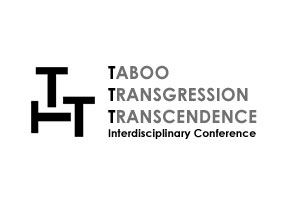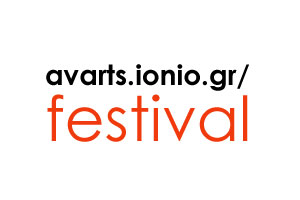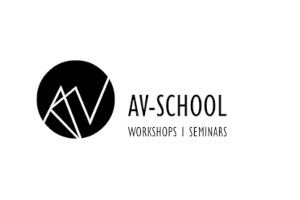Summary
We investigate potential connections between Plato's philosophical works and higher-dimensional spaces, commonly referred to as 'hyperspaces.' Mathematician and philosopher Charles Howard Hinton posited that the shadows depicted in Plato’s allegory of the 'Cave' are, in fact, three-dimensional projections of four-dimensional hyper-objects. Additionally, there is a possible correlation between four-dimensional acoustic spaces and the echoes within a cave, presenting this as another linkage between Plato’s 'Cave' and hyperspaces. In this paper we investigate a link between Plato's 'Theory of Ideas' and higher-dimensional geometrical structures, suggesting that ‘Ideas’ can be recognized by the human brain's neocortex as elements of a higher n-dimensional space, formed because of the synaptic connectivity of neurons. Finally, we introduce interactive art applications as a structured approach to exploring these connections.
Objective
Hinton's mathematical theories proposed that the shadows in the 'Cave' could be representations of four-dimensional entities projected onto three-dimensional space and in our former paper, we investigated the significant similarities between the way sound reflects off the cave walls and the characteristics of a four-dimensional acoustic space. In this paper, we link Plato's 'Ideas' to the high-dimensional structures of cliques and cavities in the brain, which are formed because of synaptic connectivity among neurons. The brain has the capability to retrieve appropriate cognitive maps and conceive 'Ideas' without the necessity for physical world stimuli by forming topological structures of up to eleven dimensions.
Method
We employ Processing, a computer programming platform designed for visual applications, to analyze the hyperspatial acoustic space of 'Plato's Cave' in alignment with the properties of four-dimensional sound. Additionally, we simulate the neural responses of the brain, illustrating how hyperspatial connectivity emerges in reaction to auditory stimuli that shape the 'Ideas' within the mind.
Conclusion
Plato’s theories on the nature of the ‘real’ world exhibit notable parallels with the properties of hyperspatial elements. This perspective challenges conventional notions of reality, encouraging deeper exploration of the ‘real’ world we inhabit and our understanding of it through the interplay between sensory perception and the high-dimensional structures formed by neural connectivity in the brain. This challenge has been approached through the fusion of objective scientific reasoning and artistic creativity, culminating in a tangible outcome: a series of innovative audio-visual stimuli enabled by advanced digital technology. The synergy of computer science, sensory technology, and artistic expertise has paved the way for a new professional domain, the "Technartist."
References
AFLALO, T.N. AND GRAZIANO, M.S.A. (2008). Four-Dimensional Spatial Reasoning in Humans. Journal of Experimental Psychology: Human Perception and Performance 34, n. 5, p. 1066–1077.
AVENA-KOENIGSBERGER, A., GOÑI, J., SOLÉ, R. AND SPORNS, O. (2015). Network Morphospace. Journal of The Royal Society Interface 12: 20140881.
EPFL (2020). About Blue Brain – In Brief, EPFL webpage. Available at https://www.epfl.ch/research/domains/bluebrain/blue-brain/about/. Accessed in 10/1/2025.
GORBAN, A.N., MAKAROV, V.A. AND TYUKIN, I.Y (2020). High–Dimensional Brain in a High-Dimensional World: Blessing of Dimensionality. Entropy 22, n. 1, p. 1–18.
HINTON, C. H. (1904). The Fourth Dimension. London, Swan Sonnenschein & Co.
KANELLOPOULOS, N.G. (2017). From Antikythera Analogue Computer to Quantum Computer and the TechnArtist: Augmented Reality and Art. 11th Audiovisual Arts Festival, Athens Concert Hall (Megaron), Athens, Greece, 20–21 May. URL:http://dx.doi.org/10.13140/RG.2.2.10730.84166N
MARKRAM, H. J. (2020). Online interview by MacKenzie, R. J., The Markram Interviews Part Three: The Blue Brain Project. Technology Networks, July 28, Available at https://www.technologynetworks.com/neuroscience/articles/the-markram-interviews-part-three-the-blue-brain-project-337967. Accessed in 10/7/2024.
PELLIONISZ A. AND LLINÁS R. (1985). Tensor Network Theory of the Meta-organization of Functional Geometries in the Central Nervous System. Neuroscience 16, n. 2, p. 245–73.
REIMANN, M.W., NOLTE, M., SCOLAMIERO, M., TURNER, K., PERIN, R., CHINDEMI, G., DŁOTKO, P., LEVI, R., HESS, K. AND MARKRAM, H. (2017). Cliques of Neurons Bound into Cavities Provide a Missing Link between Structure and Function. Frontier in Computational Neuroscience 11, n. 48.
SANTOS, F.A.N., RAPOSO, E.P., COUTINHO-FILHO, M.D., COPELLI, M., STAM, C.J. AND DOUW, L. (2019). Topological Phase Transitions in Functional Brain Networks. Physical Review E 100 (032414).
TRAPERAS, D. AND KANELLOPOULOS, N.G. (2024). Plato’s Allegory of the ‘Cave’ and Hyperspaces: Sonic Representation of the ‘Cave’ as a Four-Dimensional Acoustic Space via an Interactive Art Application. AppliedMath 4(3), p. 975-85.
TYUKIN, I., GORBAN, A.N., CALVO, C., MAKAROVA, J. AND MAKAROV, V.A. (2019). High-Dimensional Brain: A Tool for Encoding and Rapid Learning of Memories by Single Neurons. Bulletin of Mathematical Biology 81, p. 4856–88.
Dimitrios Traperas is an Associate Professor at the Department of Fine Arts and Sciences of Art, School of Fine Arts, University of Ioannina. He holds a degree in Physics from the School of Sciences, University of Ioannina, and a degree in Audio and Visual Arts from the School of Music and Audiovisual Arts, Ionian University. He completed his PhD thesis and postdoctoral research at the Department of Audio and Visual Arts, Ionian University, focusing on the study of visual and auditory perception of higher spatial dimensions, commonly known as "hyperspaces." He has presented his artistic work in solo and group exhibitions of painting, photography, video art, and interactive audiovisual installations. His research interests focus on the sensory perception of higher spatial dimensions and the interdisciplinary approaches that emerge at the intersection of Art, Science, and Technology.
Back





